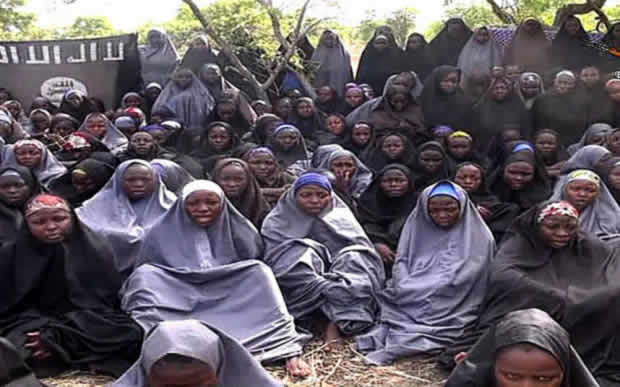
On April 15, 2014, the world woke up to a gruelling report. One of the most notorious mass kidnappings in history had just happened in Nigeria.
About 276 school girls had been abducted by the Jama’atu Ahlus-Sunnah Lidda’Awati Wal Jihad —the Boko Haram Islamist group. For a moment, the Nigerian government was in denial, but not for long. A thunderstorm of horrifying, often conflicting reports about the time, context and scale of the incident smashed into the airspace. For many weeks, it was all the world could talk about.
Muslims around the world distanced themselves from the act. Grand Mufti of Saudi Arabia, Abdul-Aziz Abdullah Al Sheikh, said the then leader of the Boko Haram sect, Abubakar Shekau, was a disgrace to Islam.
In the wake of the event, as it unravelled, widespread anger was directed at the government of President Goodluck Jonathan. Public outrage morphed rapidly into organised activism, culminating in the formation of the pressure group, “Bring Back Our Girls.” The group garnered support from across the world with global figures such as the then United States First Lady, Michelle Obama, and Nobel laureate Yousafzai Malala raising the slogan and putting the Nigerian government under further pressure. The siege was thick around the Jonathan administration which veered back and forth over the strategy. On the side, the newly formed opposition coalition, the All Progressives Congress, mocked the ruling party for its lack of a solution to the problem. While it demonstrated a lack of clarity in the face of global condemnation, the Jonathan administration flatly rejected American and British help. “The girls were located in the first few weeks of the RAF mission,” a Royal Air Force personnel told reporters, “We offered to rescue them, but the Nigerian government declined.”
A year later in 2015, the Chibok Affair constituted one of many major factors that led to the electoral fall of the ruling party for the first time in Nigeria’s history.
The jihadist group was formed in 2002 by Mohammed Yusuf as a takfiri jihadist movement. From Maiduguri, Borno State, where it was initially based, the group spread across the Lake Chad Basin with cell groups in Chad, Cameroon, Niger and Mali. Yusuf promptly embarked on a mass radicalisation of mostly young people in Nigeria’s northeastern state of Borno. Heavily funded by both local and international financiers, the group’s cardinal aim was to destroy Westernisation, secularism, Christianity and Shia Islam in Nigeria’s Muslim-majority North. Yusuf’s activities drew the attention of the Nigerian government and the group was brutally suppressed. In July 2009, its leader, Yusuf died in police custody. Everywhere was calm for a moment until a mass prison break in Bauchi in September 2010 announced the return of Boko Haram as a major terror group in the region.
Initially, its increasingly elaborate operations were aimed at soft targets, but things took a turn in August 2011 when the United Nations building in Nigeria’s capital, Abuja, was hit by a car bomb, claiming lives. Shortly after, in November 2012 a suicide bomber hit the headquarters of the Special Anti-Robbery Squad of the Nigeria Police Force, also in Abuja. The government responded with a declaration of emergency in May 2013 over the states of Borno, Yobe and Adamawa in Nigeria’s North-East geopolitical zone. But despite increased military activities, militant attacks were not contained.
Since May 2013 when President Jonathan declared a state of emergency, about 2.5 million people have been displaced by the conflict. Boko Haram has since carried out scores of massacres, including 42 schoolboys in February 2014 in Buni Yadi, Yobe State who were burnt alive. Overall, an estimated 50,000 people have been killed in the conflict. And while it has been decimated by the Nigerian military, Boko Haram once controlled an estimated 50,000 square kilometres and is still active. While the group gathered notoriety in the world, none of its sins accumulated global infamy as the Chibok abduction.
In less than 24 hours after the events, tales of heroism presented some relief to observers across the globe. Fifty-seven girls leapt from the truck conveying them to bondage and thus they became the first of the roughly 180 to escape from their captors. In October 2016, 21 girls were released from captivity, and through Nansen Refugee Award winner, Zanna Mustapha, an additional 82 were released in May 2017. According to a report, this was a deal between Nigerian authorities and Boko Haram. Four girls had reportedly fled on their own. Nine years after the event, roughly 90 girls remained in Boko Haram’s captivity, while six were said to have died.
The legacy of the Chibok abduction is represented in various media forms. In November 2022, 108 girls still in captivity were remembered in an exhibition of sculptures in Lagos. Inspired by ancient Nigerian Ife terracotta heads and titled “Statues Also Breathe,” the sculptures recalled the faces, facial expressions and hairstyles of the victims. In February 2018, the Hollywood film “Black Panther” devoted a scene to the kidnapping of the students. Two years after the event, in 2016, Caine Prize-winning novelist Helon Habila tracked the victims after the event and presented their emotions in his expose, “The Chibok Girls: The Boko Haram Kidnappings and Islamic Militancy in Nigeria.”
According to The Wall Street Journal, most of the girls were reintegrated into school with many of them attending various American colleges.
The event clocks one decade but a certain category of people are still in shock. The families of the remaining missing girls have again shared their agonies with the world. This signifies a sustained bewilderment at the very cold fact that such an event ever happened. It could be bewildering indeed that the Chibok abduction fleeted past without a sensible resolution. Other things happened in the world which overtook the event and an intense silence replaced the initial charge that set the media space on fire. This confirms that a decade is long enough to bury the event at the bottom of an archive with a multitude of other sensational stories.
Over 10 years, Boko Haram, its splinter groups and bandit groups have altogether abducted more than 2000 schoolchildren in Nigeria. It is apparent that Nigerians are not anymore shocked by tales of mass kidnappings. Between 2014 and 2024, over 20,000 people have been kidnapped in Nigeria and tens of millions of dollars (or tens of billions of naira) have been paid as ransom to abductors.
Amid the hopeless condition, where safety became a luxury, it might be difficult to isolate the Chibok abduction. But, as the foregoing might suggest, it was a forerunner for the horrible times to come. Although blame was shifted, no one was ever arrested, questioned or punished for the incident. While justice has scarcely been served, a sin like the Chibok abduction can hardly be forgiven.





